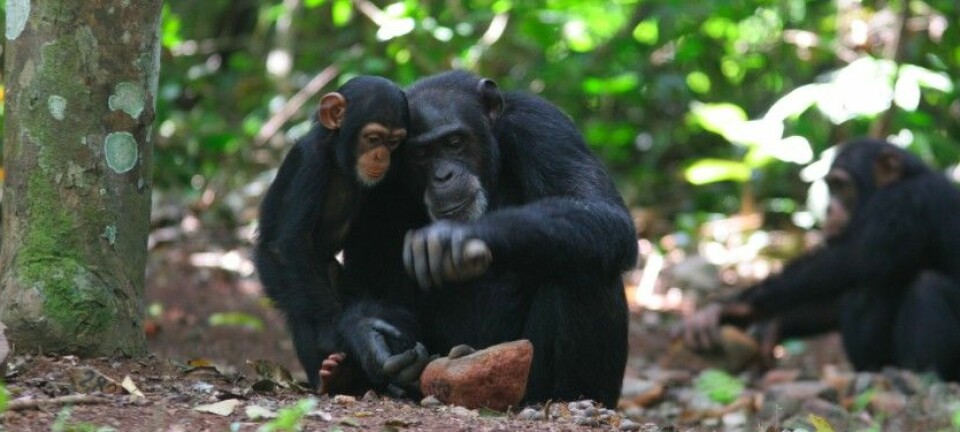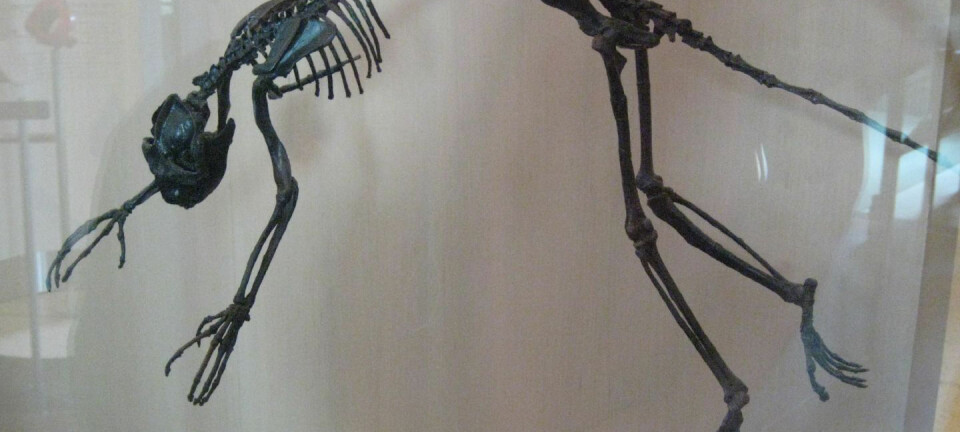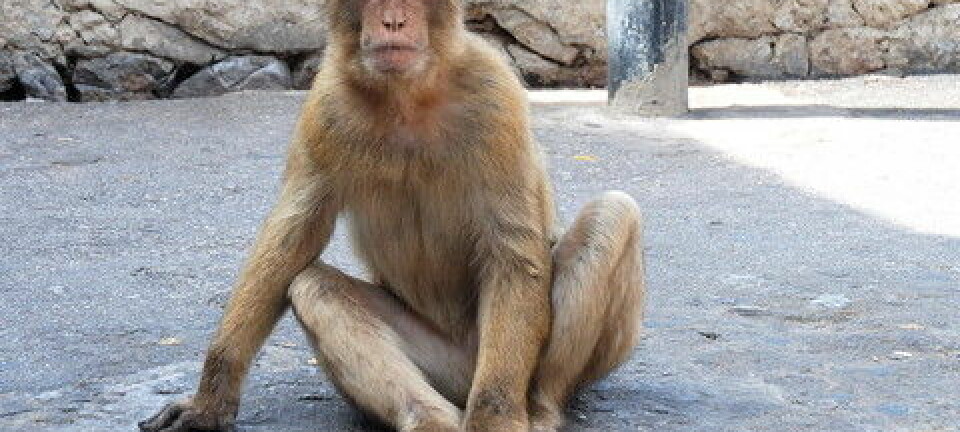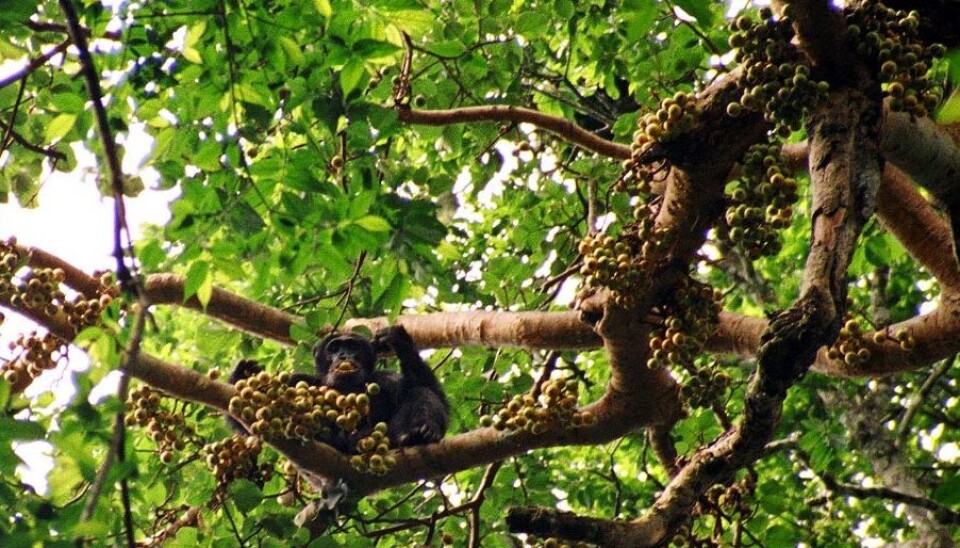
Ape hunt ruins rain forest fruit trees
When Nigerians hunt monkeys and apes to put food on their plates they are not just jeopardizing these simians, but also the survival of fruit trees in the rain forests.
Swedish and Nigerian researchers have joined forces in a study of the consequences when people hunt for so-called “bushmeat”, wildlife that can include animals at risk of extinction. Their special focus has been on the hunt of our primate cousins.
Simians − apes and monkeys − have a valuable function in rain forests:
They eat fruit and disperse the seeds throughout the forest in their dung. They also carry the fruit with them as they travel about, spitting out the seeds wherever they might eat it.
This ensures the regeneration of the fruit trees, giving seedlings an opportunity to grow. The study shows that without simian aid the future of these trees looks dismal.
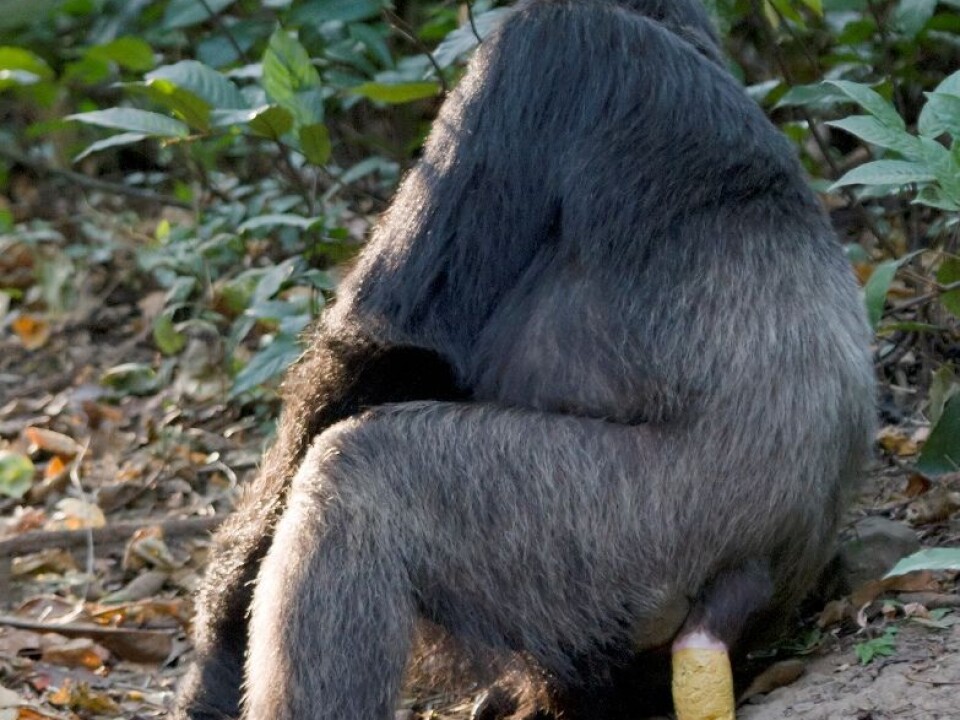
“This is your standard downward spiral. Poor people are not at liberty to make the best choices for themselves or the forest,” says Ola Olsson, a biologist at Lund University who was responsible for the study.
The gardeners of the forest spit and defecate
Bushmeat can include great apes such as gorillas and chimpanzees, as well as monkeys.
In well-off countries we appreciate these species, which are our closest relatives, for their own sake, and don’t like to think of them as a source of protein.
They are also good keepers of the rain forest.
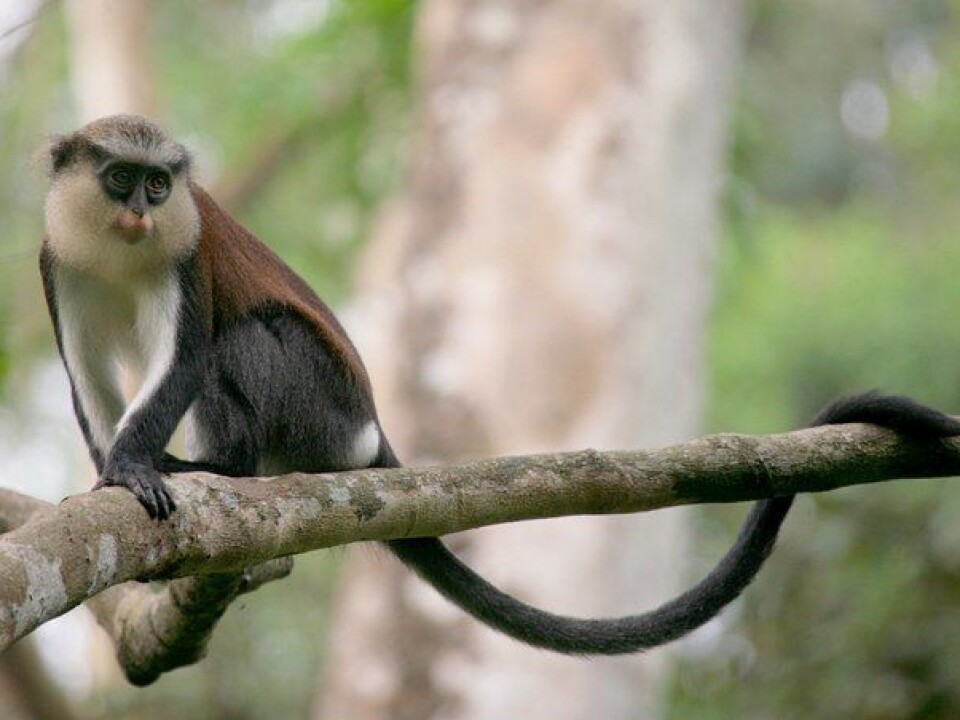
The forest studied by Olsson and his colleagues houses some 200 species of fruit trees, including Irvingia, also called bush mango, and trees that resemble nutmeg.
Some of these bear such large fruit – and big seeds – that the seeds cannot be spread by wind or smaller animals.
Their seeds are only dispersed when eaten by great apes, which deliver them to new places hours later in their dung.
“This is a good start for a young tree. It can get far away from the parent tree and get established in a pile of natural fertilizer. Some of these seeds cannot grow unless they have first passed through the intestines of an ape,” explains Olsson.
Most fruit tree saplings gain from taking root far from the mother tree. Mature fruiting trees attract hungry animals which might also eat the seed or the seedling before it takes hold.
Monkeys have other techniques of seed dispersion too.
“They do what many of us might do in the presence of a cherry tree. They fill their mouths with the fruit and spit out the pits. Smaller primates are great at this. They have cheek pockets which they fill with fruit. Then they take off, spitting out the seeds one by one as they eat them. This seems to be ideal for the trees,” says Olsson.
Half the simians, far fewer young trees
Olsson and his Nigerian, Swedish and American colleagues have looked at what kind of trees grow in forest areas which either see a lot, or relatively little, hunting for bushmeat.
“The result wasn’t unexpected, but I was surprised by how strong and unmistakable the effect was,” says Olsson.
A well protected area had twice as many groups of apes and monkeys as one frequently used by hunters. Moreover, the forest with a denser simian population can have nearly two-and-a-half times as many young fruit trees. In the hunted areas with sparser simian populations the trees that succeeded best were those that spread their seeds in other ways, for instance through the wind.
In another experiment the researchers chopped down nearly all the vegetation in a couple of small areas to ascertain which tree species established themselves within two years. The result was exactly the same – fewer fruit trees took hold when the wild primates were under pressure.
Deforestation raises the risk
Olsson and colleagues selected areas to study in Nigerian national parks. However, deforestation is at least as big a threat to monkeys and apes as bushmeat hunters, so Olsson fears that the real situation is worse than what the study encountered.
There are no quick fixes for ensuring viable population of simians, fruit trees and a healthy rain forest biodiversity. It would be arrogant to suggest that the Nigerians starve themselves for the sake of fruit trees.
However, there are incentives. Humans are primates too and we also like to eat the rain forest fruit and have an interest in the proliferation of fruit trees.
“We have spoken with the locals in the area and out impression is that they have a positive attitude toward the apes and monkeys – and they know how necessary they are for the forest,” says Olsson.
Translated by: Glenn Ostling
